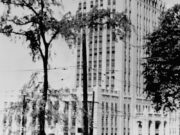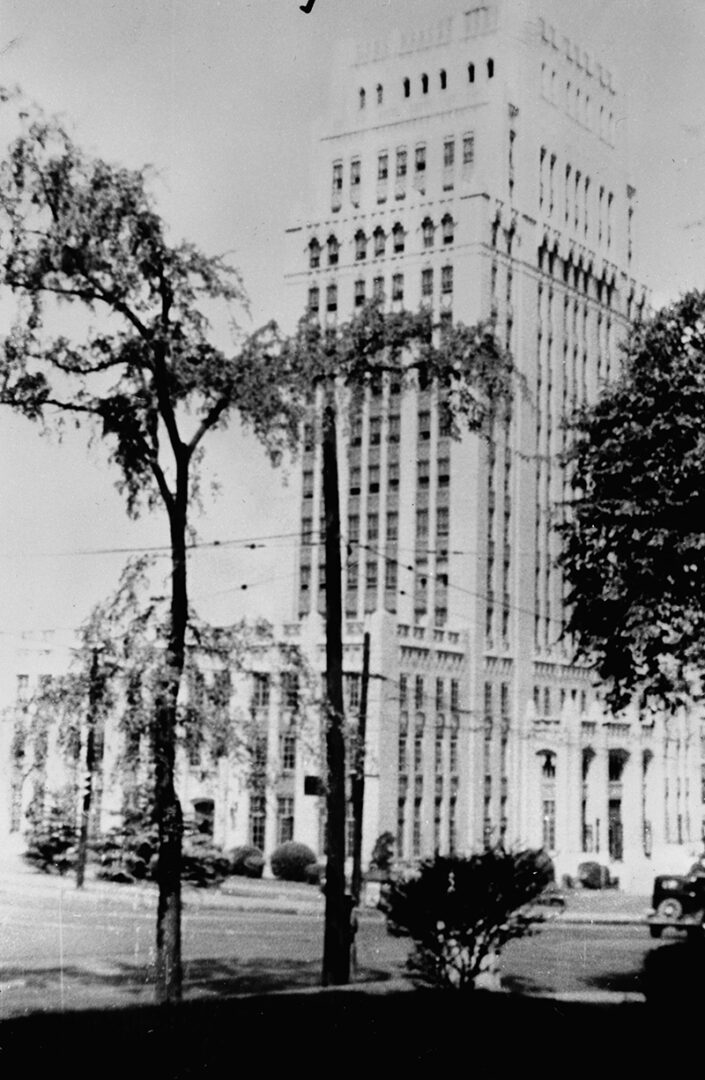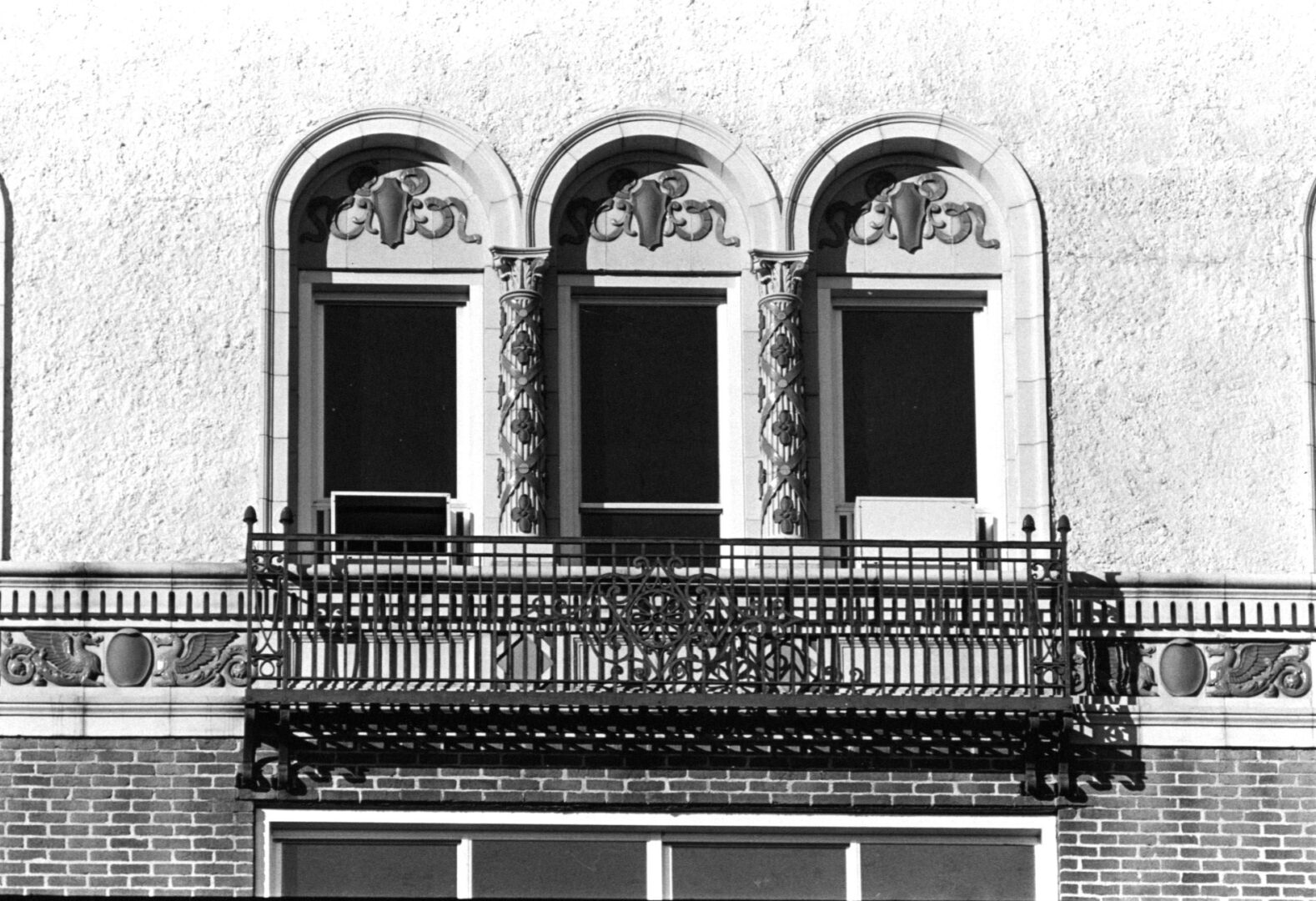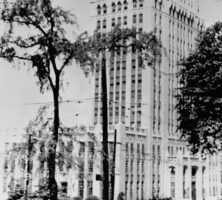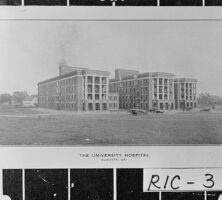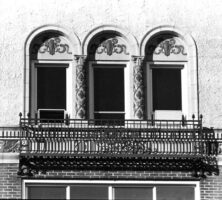G. Lloyd Preacher, a major figure in southeastern architectural history, is perhaps best known for designing Atlanta’s elaborate art deco, neo-Gothic city hall (1930). He also contributed to the development of the Mediterranean mode as a regionalist style in the Southeast, but he was particularly known for his commercial office, hotel, and apartment building designs, joining Alfred Bossom, W. L. Stoddart, and Pringle and Smith as architects producing noteworthy examples of these building types.
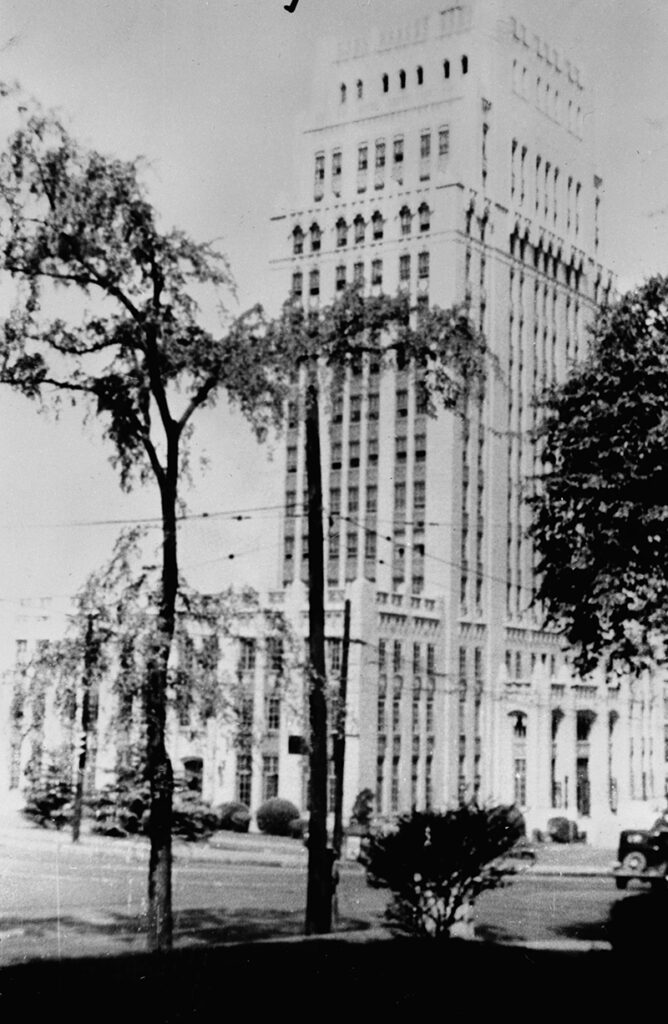
Courtesy of Georgia Archives.
Geoffrey Lloyd Preacher was born on May 11, 1882, in Fairfax, South Carolina. In 1905 he married Fannie McDaniel, a young woman from an old and prominent Georgia family. By 1917 Preacher was well established in Augusta; by 1918 he served as a member of the Georgia American Institute of Architects (AIA) and was well positioned professionally as a member of the architectural review board. (He lost his AIA membership in 1927, following unsubstantiated charges of mishandling construction funds in the building of the Cape Fear Hotel in Wilmington, North Carolina.)
In 1907 Preacher took the first steps toward converting a frame Summerville residence (1899) into the framed Partridge Inn, a tourist hotel in Augusta further developed by Willis Irvin in 1929. In Augusta, Preacher designed the old University Hospital (1915, razed in 1991) and the Plaza Hotel (later James Hotel; 1914, razed in 1991). Other notable works in Augusta include his Imperial Theatre (1918), a terra-cotta-clad vaudeville and movie theater. He collaborated with W. L. Stoddart on two buildings during the 1910s, the Chronicle Building (1912-14) and the Lamar Building (1913-17). The Lamar is a sixteen-story steel-frame and terra-cotta building with vertical lines flowing elegantly up to arches and a noble cornice, echoing the comparable high-relief terra-cotta on his Marion Building (1912).
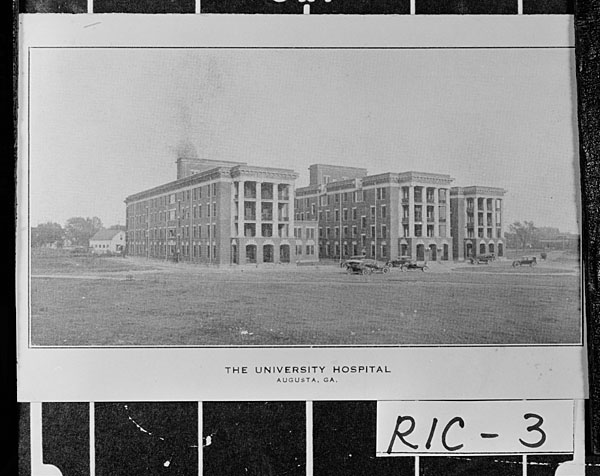
Courtesy of Georgia Archives.
By 1922 Preacher had moved to Atlanta, which became the hub for his developing southeastern practice. His firm, G. Lloyd Preacher and Company, built prominent works in Alabama, Florida, and North Carolina, and in Atlanta Preacher’s projects were large and conspicuous. His office buildings include the Wynne-Claughton Building (later Carnegie Building; 1925) and the Medical Arts Building (1927); three noteworthy hotels were the Henry Grady (1924, razed), the Briarcliff, or “Seven Fifty” (1924-25), and the Dinkler, which was designed in 1930 but never executed. Among his numerous apartment buildings were the Belmont, or “One Ninety” (1921). His Redmont Hotel (1925) in Birmingham, Alabama, and the El Nuevo Hotel (1923; later Gulf Stream Hotel) in Lake Worth, Florida, added prominent urban amenities to these southern cities; the Lake Worth hotel, visible for miles, is especially noteworthy as the town’s only skyscraper.
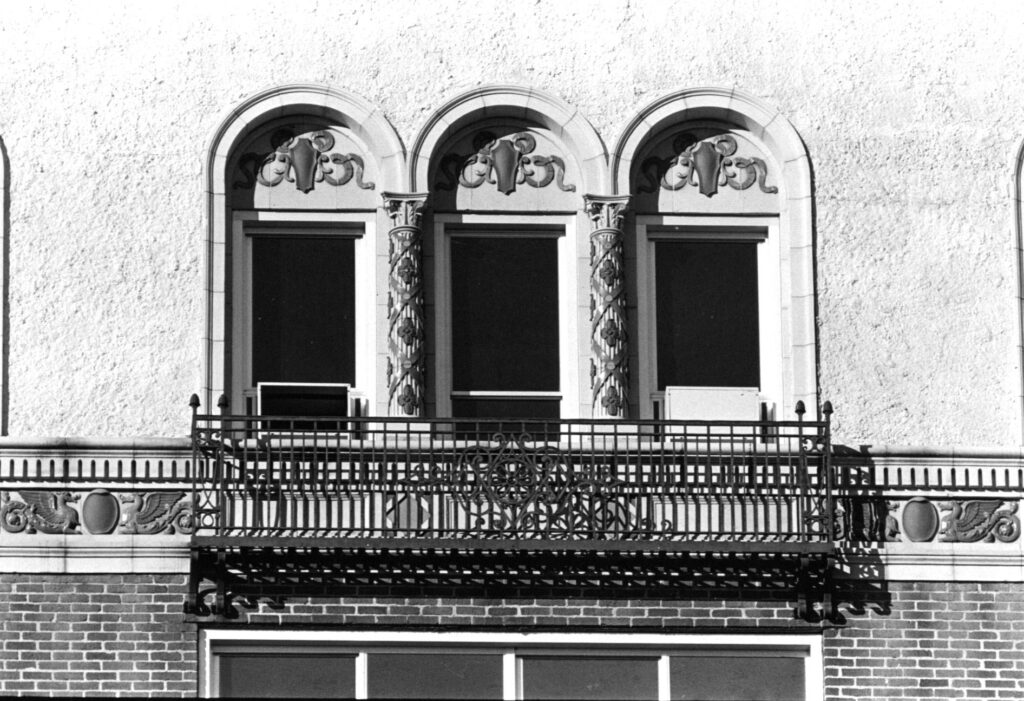
Courtesy of Atlanta Journal-Constitution.
Preacher turned to a Mediterranean style for the Soreno Hotel (razed) in St. Petersburg, Florida, a favorite style that he had adopted for some Atlanta houses. His own residence in Druid Hills (1924) is a picturesque neo-Spanish villa across the street from Rainbow Terrace (1921-22), a Mediterranean-style villa that Preacher built for Lucy Candler Heintz, the daughter of Coca-Cola magnate and real estate entrepreneur Asa Candler.
During the late 1920s, Preacher built or added to numerous public schools, notably the F. L. Stanton, Capitol View, and Whitefoord elementary schools (all circa 1927-29) in Atlanta, and during the same period he built auditorium and classroom extensions to O’Keefe and Joseph Brown junior high schools and to the Virginia Avenue School (later Inman Middle School), also in Atlanta.
Preacher designed an outstanding automobile showroom in the 1930s, the Atlanta Freeman Ford Building, in the art deco style. The building has been converted into loft apartments that retain the elaborate cornice detailing and evidence of the car ramps on the interior.
In the end, it may be the exotic exuberance and lavish detail of Atlanta City Hall that most endears Preacher to architectural devotees. City Hall opened in 1930, just two months after the Fox Theatre, and in both buildings Atlanta received a vision of architectural romance and excess not likely to be repeated soon.
Preacher died on June 17, 1972.


